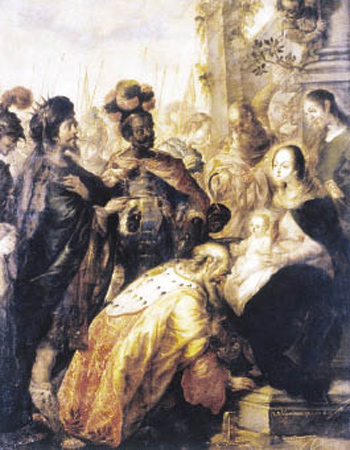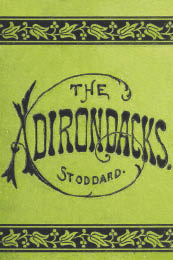
Photo by Barbara Mundy, Ph.D.
An emerging set of research methods is quietly revolutionizing how academics and others in the humanities approach their scholarly pursuits.
Digital humanities, or DH for short, employs digital media and advanced computational technologies to advance the traditional questions posed by the humanities disciplines.
To focus attention on DH, hundreds of members of the global academic community logged on to a WordPress site on March 18, where they blogged and photographed the details of their day.
The symbolic ad hoc gathering was dubbed “A Day in the Life of the Digital Humanities.”
For academics who use the cutting-edge research methods in their scholarship, terms such as crowd sourcing, wikis, digital collection development, text mining and geospatial mapping (GIS) have become standard vocabulary.
But for humanities scholars who have not yet ventured into the terrain of advanced digital technologies, these terms—and the research methods and scholarly products they describe—may seem a stark break with traditional peer-reviewed journals or academic monographs.
Yet as the world morphs from print to e-book, and as research tools move from tangible to intangible material, the transition nears.
How can a university successfully bridge the divide between what the past dictates and what the future holds?

Books about the history of the Hudson River have been moved online through the Digital Hudson project.
Image courtesy of the Digital Hudson Project
Traditional scholars in the Jesuit community have been at the forefront of these new research methods from the start. Italian Jesuit Roberto Busa was a pioneer in the field (then known as “computational humanities”) when he approached IBM founder Thomas Watson in 1948 to enlist the aid of his information science team in the creation of an electronic concordance of the works of Thomas Aquinas.
DH at Fordham is growing thanks to the Digital Humanities Working Group, a team of faculty members, administrators, librarians and University information technologists with an interest in furthering DH methods and platforms.
Supported by the provost’s office, the dean of the Arts and Sciences faculty and Fordham IT, the Digital Humanities Working Group is co-chaired by J. Patrick Hornbeck II, D. Phil., assistant professor of theology and medieval studies, and Micki McGee, Ph.D., assistant professor of sociology.
“Digital technologies will be central to the way that scholarship is practiced and articulated,” McGee said. “How do we ensure that the next generation of scholars coming up at Fordham—either as new faculty or graduate students—find that their digital humanities work is adequately discussed, embraced and supported? We are interested in seeing that happen.”
This past spring, the provost’s office sponsored the initiatives of several Fordham faculty members, helping them to advance their DH projects, including online resources being developed by Hornbeck and McGee.
In “The Latin Works of John Wyclif,” Hornbeck has begun to digitize 10,000 pages of the medieval philosopher’s writings, taking a set of 26 volumes to which few people have access and making them available online for free.
In the Yaddo Archive Project, McGee digitized residency records from the renowned artists’ colony to examine the social relationships among 1,700 of its members. To do this, she developed an interactive digital platform that illustrates—through timelines, photos and complex starburst-like graphic mapping—the pivotal importance of social relationships to artistic productivity.

Photo by Bruce Gilbert
Perhaps the oldest DH project at Fordham is also one of its most successful. In 1995, Maryanne Kowaleski, Ph.D., the Joseph Fitzpatrick, S.J., Distinguished Professor of History and director of medieval studies, helped graduate student Paul Halsall put the Internet Medieval History Sourcebook on the Fordham website, providing digital translations of copyright-free medieval primary sources.
“If you Google the word ‘medieval,’ one of the first things that comes up is the Fordham site,” said Kowaleski, noting that the Sourcebook accounts for 40 percent of all traffic at www.fordham.edu. “That has been a huge public relations boost for us in medieval studies. The large number of graduate applications we get because of the Sourcebook shows us the true reach of digital humanities.”
A number of other faculty members have had projects in the works for several years. In 2007, Glenn Hendler, Ph.D., director of the American studies program, associate professor of English, and co-editor of Keywords for American Cultural Studies (NYU, 2007), developed The Keywords Collaboratory, a wiki-based space where students across the country can collaborate on an online essay about a word, extracting meanings of that particular word from multiple sources.
Through its online creation and posting, the essay becomes, in effect, dynamic knowledge—ever-changing, ever-expanding— and a new collaborative form of scholarship that no print-based book could accommodate.
Over the last five years, Barbara Mundy, Ph.D., associate professor of art history, has developed a web-based and DVD work, VISTAS: Visual Culture in Spanish America 1520-1820, published by the University of Texas Press, that interprets 350 high-resolution images of Latin American art and architecture. Through it, says Mundy, students are freed up by a visual format that doesn’t lock them into looking at illustrations in a book.
And Roger Panetta, Ph.D., visiting professor in the Department of History and curator of the Hudson River Collection at the University Libraries, has collaborated with 13 other regional libraries and archives to create the Fordham-based Digital Hudson, a digital repository of documents concerning the river’s history and centrality to the region. The collection, which began nearly five years ago, includes more than 154 items.
It is no coincidence that, when one discusses DH, the word “collaboration” seems to be right there in the mix. By virtue of open source technology, DH is fundamentally a “collaborative and interdisciplinary” activity, McGee said.
“DH is often less hierarchical than traditional scholarly contexts,” she said. “It also opens up new avenues of scholarship.”
For example, while “close reading” of one or two texts is the norm in exploring the nature of literature, new computer models make “distant reading” the latest in scholarly phenomena. This method, being pioneered at the Stanford University Literary Lab, analyzes massive amounts of digital data in, perhaps, entire canons of literature.
One thorny problem for the DH scholar, however, is that most DH-based research relies on rapidly evolving technology that is constantly in flux. For that reason, McGee received funding this past summer from the National Endowment of the Humanities to work with other scholars to develop standards for interoperable data that fosters collaborative archival research.
As part of their provost-funded initiative, McGee and Hornbeck, along with Erick Kelemen, Ph.D., director of the Center for Teaching Excellence, visited several universities to see how other institutions support digital humanities scholarship. At Loyola University Chicago, said McGee, humanities researchers are joining their own computer science faculty to develop new technologies and research ventures.
“This is a brilliant approach,” she said. “You capture the cutting edge of computer sciences work and partner it with cutting-edge humanities work.”
So, too, is creating standards for the scholarly assessment of such projects. How would any digital humanist’s project—such as Mundy’s VISTAS and its 200,000 words of original text—be judged in a tenure or promotion review?
There are efforts underway by the Modern Library Association and the American Historical Association to better define best practices for peer review of digital humanities projects and publications. But there are still “serious methodological and architectural challenges” regarding digital scholarship, Hornbeck said.
“It will take a generation or two of scholars transitioning this in,” he said. “I doubt this will be a conversation that will be ongoing in 2050, but it certainly will be in 2016.”

